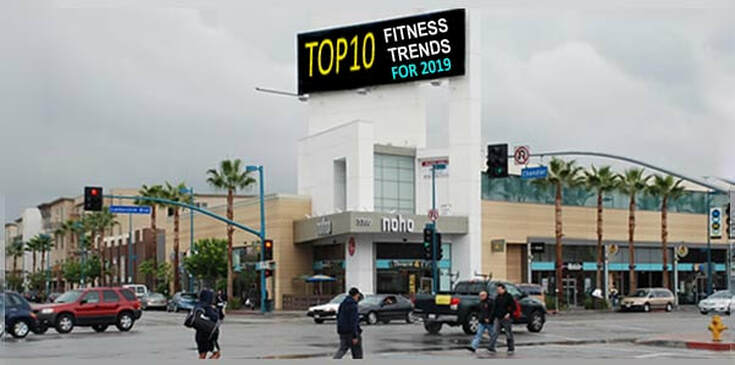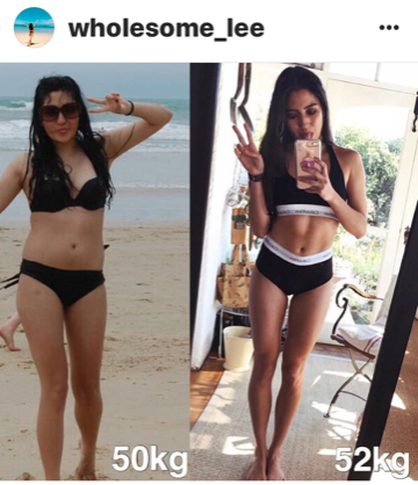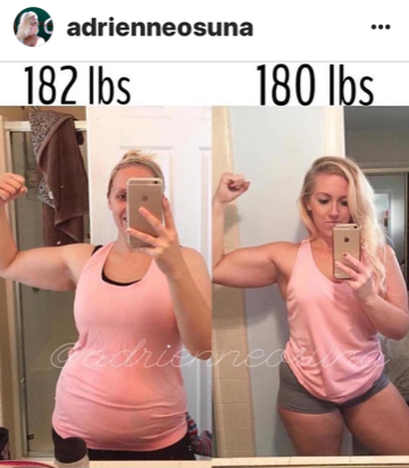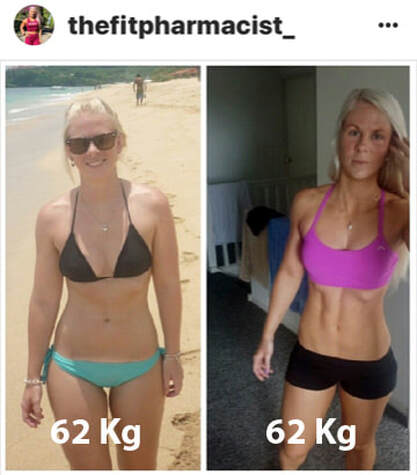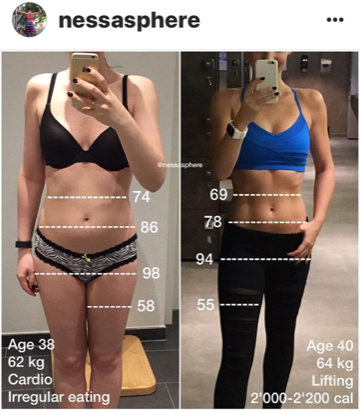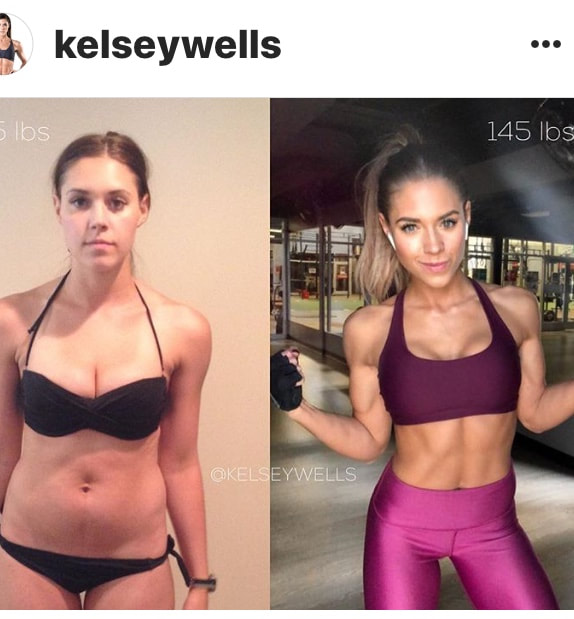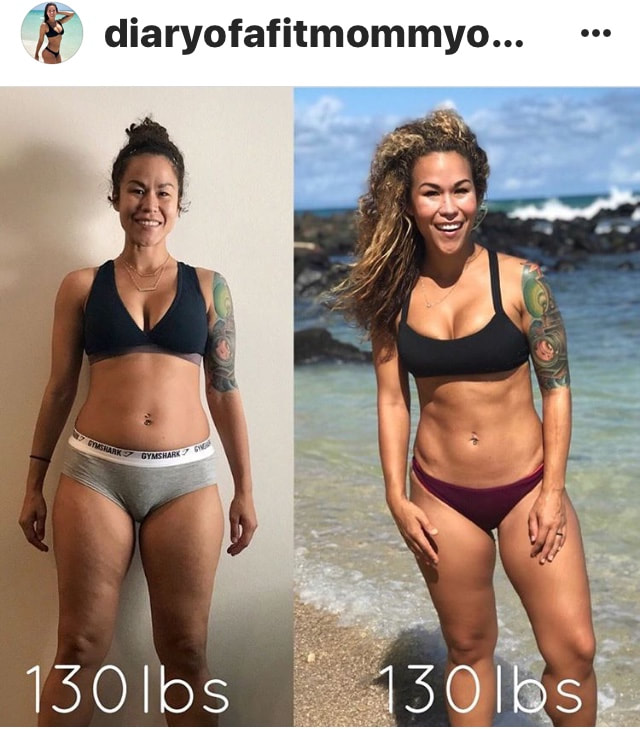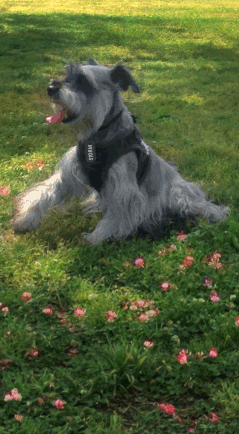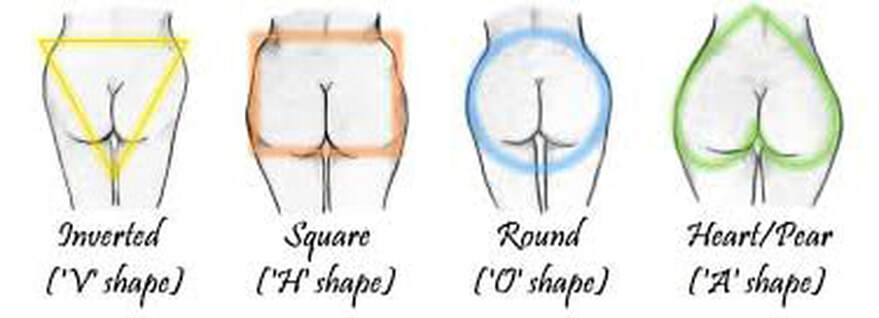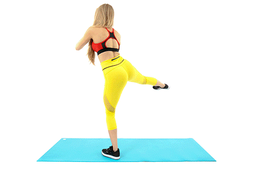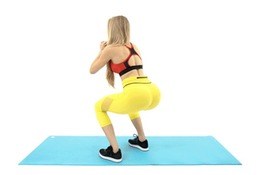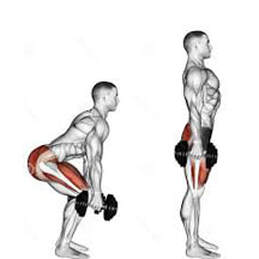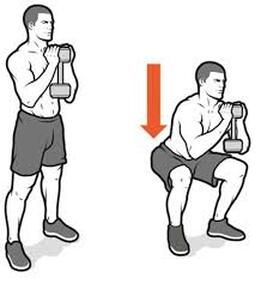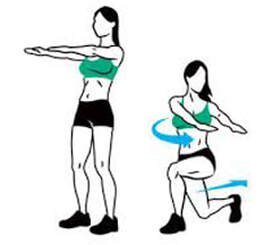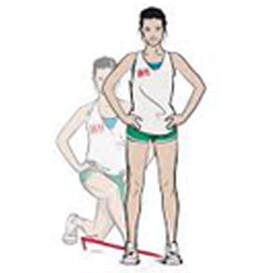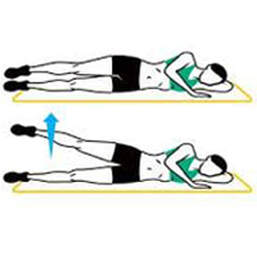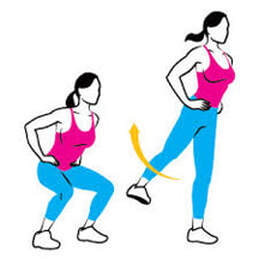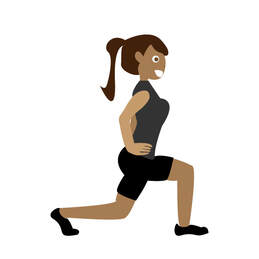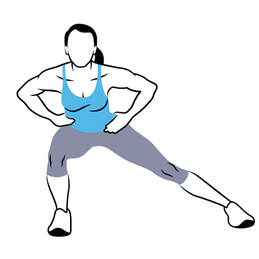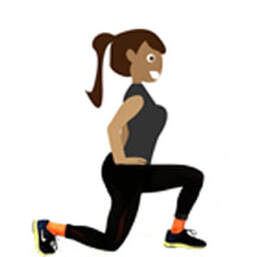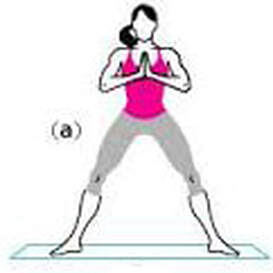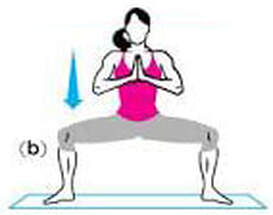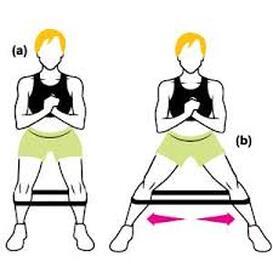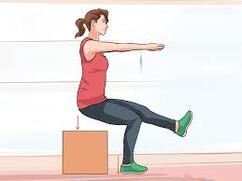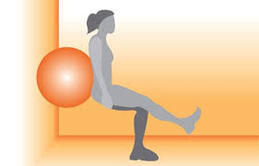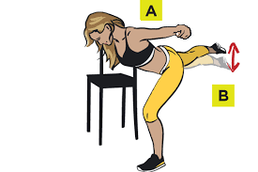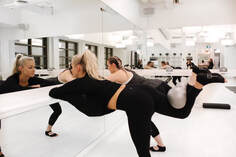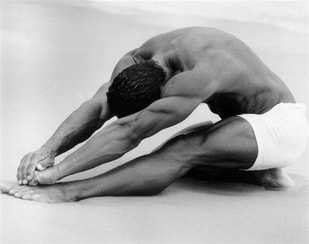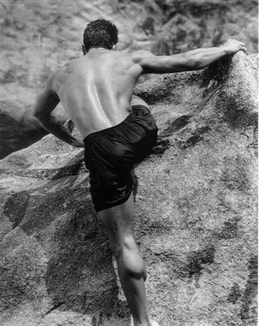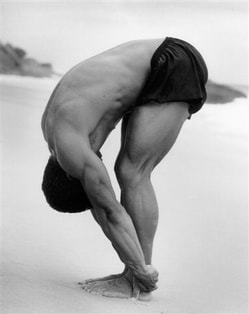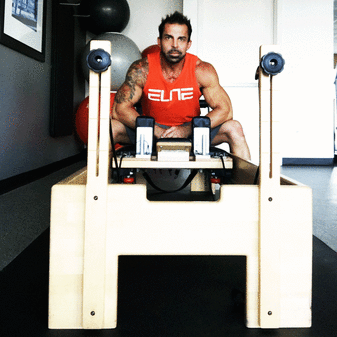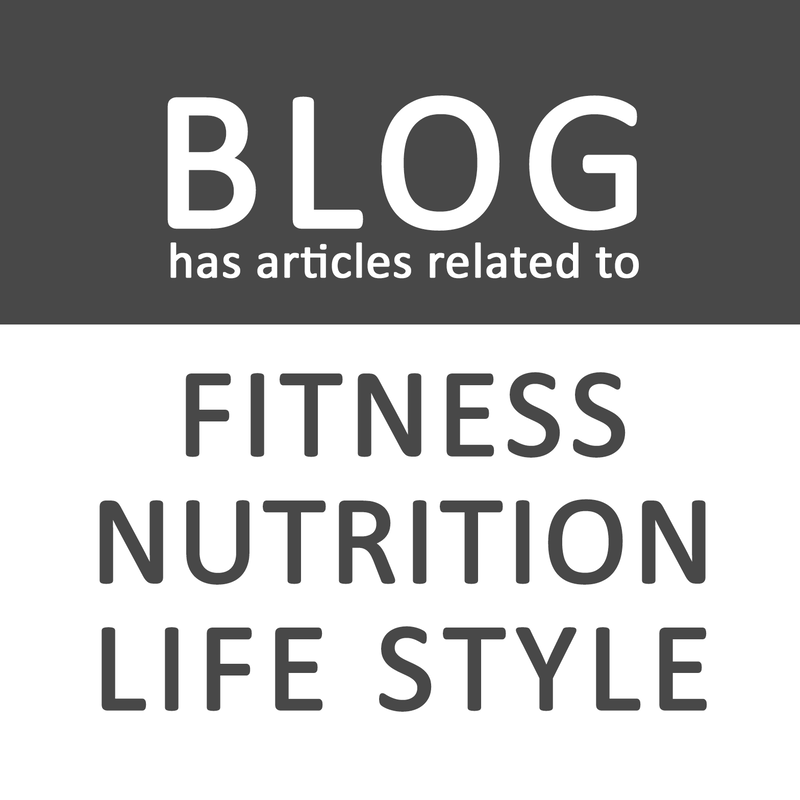|
Samba balances his energy with two daily walks.
He keeps fit and socialized by running and playing in the park three times a week. |
Lifestyle Find Yours.
Samba in front, followed by his friend Batucada. |
|
Today, I wanted to address a question that I often receive due to my fitness brand, GO6PACK Fitness.
Many of you have reached out and asked me about the timeline for developing six-pack abs. I wanted to take this opportunity to share my answer, which remains consistent and reflects the realistic approach I take in my training programs.
0 Comments
Discover the fascinating connection between Brazil's bicentennial celebrations and the emergence of the American Constitution. Watch the captivating video with English subtitles!
Ready to transform your booty? Discover the ultimate guide to sculpting your dream bubble butt with these powerful exercises. Watch the video below to see them in action, including variations with resistance bands for added intensity!
Discover how a personal trainer turned adversity into opportunity during the pandemic. Find out how innovative training programs, outdoor workouts, and resistance bands transformed lives. Read on to learn how resilience and embracing change can lead to rewarding results!
Discover the unique advantages of resistance bands and weights for strength training. Explore how these tools offer similar benefits while also providing distinct advantages in different scenarios. Read on to find out which option suits your needs best!
As we welcome the new year, join us in exploring the impact of harmful foods on your body. Discover the top three culprits that could be damaging your health and well-being. From insightful information about the Mediterranean diet's benefits to the pitfalls of harmful diets like Whole30, Atkins, and Ketogenic, this article has everything you need to start the year strong. Read on to make informed choices for a healthier you!
Almost every one of us has been raised with the idea that you should wash and clean every food that you bring into your kitchen. However, there are actually some foods that do not need to be washed, and washing certain foods might expose you and your loved ones to serious health conditions.
Discover the Surprising Link Between Bananas and Weight Loss. As soon as we hear the phrase “weight loss” the first thing that comes to our mind is hunger, restrictive diets, and excessive workout. However, most of the time, the person ends up breaking the diet and giving up on the whole diet program. There are some foods that are very rich in nutrients, which will provide you with the necessary daily intake of vitamins and significantly reduce your appetite, preventing you from feeling hungry. One of these foods is banana.
Prepare to Rethink Apples: Startling Discoveries Exposed.
Most people believe that apples are healthy, but guess what? It’s not exactly true. Actually, apples involve several risks that may urge you to make a trip to the doctor. Besides, a portion of this fruit may be deadly. Let alone the pesticide residue and allergens that could seriously harm your health. Here are the downsides of apples, and a few ways to lower the risks: Since 2006, the American College of Sports Medicine (ACSM) have conducted a survey to predict future health and fitness trends for the following year. The survey conducted is used to help predict trends in both fitness and wellness for the following year with responses from those who work in the health and fitness industry, while also identifying fads, or activities/workout styles that are only relevant for a short period. Highlights of the 2019 annual survey of health and fitness trends included: 1. Wearable TechnologyWearable technology was at the top-ranked position it had occupied for two consecutive years, before dropping to number three in last year’s survey. The return of wearables might be due to the result of manufacturers correcting some monitoring inaccuracies of the past. 2. Group TrainingGroup training, defined as classes of more than five participants, was rated number two for the second year in a row. Small group training has been gaining popularity because it’s an affordable, fun way for clients to take advantage of a trainer’s expertise at a lower financial investment — all while keeping the fun and competitiveness of a group dynamic. 3. high-Intensity Interval Training (HIIT)Third in the league is, high-intensity interval training (HIIT), referring to short bouts of workout followed by a short rest period. 4. Fitness Programs for Older AdultsFitness programs for older adults has made a strong return to the top 10 in recent surveys. “Older adults” typically refers to anyone age 65 years or older, but it is important to realize that this age group includes a wide range of fitness and health needs. 5. Body Weight WorkoutsBody weight workouts for a bodyweight practitioner a strong core is the key to build body strength. Be brave and abandon the stability which most weights machines offer. Instead, hit the floor and perform your press ups unilaterally, on one leg or with one arm. You’ll find the added degree of difficulty recruits more muscle fibers, engages the core and gets the different muscles in the body working cohesively. 6. Certified Fitness ProfessionalsRanked sixth in the order, is employing certified fitness professionals – certified by ACSM or other nationally accredited organizations replacing “educated, certified, and experienced fitness professionals,” 7. YogaWith the increasing rise in different forms of yoga like the Power Yoga, Yogalates, yoga in hot environments, and others it has for the first time appeared in the top 10 in this survey after 2016. 8. Personal Training. With increasing demand, personal training has become more accessible online, in health clubs, in the home, and in worksites that have fitness facilities. Personal training includes fitness testing and goal setting with the trainer working one on one with a client to prescribe workouts specific to each client’s individual needs and goals. 9. Functional Fitness TrainingFunctional fitness training. There is a trend toward using strength training and other activities/movements to improve balance, coordination, strength, and endurance to improve activities of daily living. Replicating actual physical activities someone might do it as a function of their daily routine depending on the need. Functional fitness also is used in clinical programs to replicate activities done around the home. 10. Exercise is MedicineIt is a global health initiative that is focused on encouraging primary care physicians and other health care providers to include physical activity assessment and associated treatment recommendations as part of every patient visit and referring their patients to exercise professionals. In addition, EIM recognizes fitness professionals as part of the health care team in their local communities.
Trends dropping out of the top 20 since the previous survey were circuit weight training, sport-specific training, and core training. When you're going to the gym, eating well, and taking steps to improve your health , it's normal to want to track your progress and see the results. You might think that weighing yourself is the best way to measure that progress, but that's not always the case. There are a number of reasons why it's not a good idea to fixate on the number on the scale . One easily forgotten reason is that your weight only indicates your body mass index (BMI), not your body composition, which is the amount of muscle versus fat you have on your body. Your body composition makes a huge difference in what you look like even though it can't be measured by the scale. To the scale, a pound is a pound. Muscle does not weigh more than fat — but it does take up less space on your body, which is why you might look leaner after building muscle even if your weight doesn't change. To demonstrate that, many women have shared photos on social media that show how building muscle can make you look leaner, even if you don't see a change on the scale.
REFERENCE: Instagram
As we get older, we can lose inches off our height, but why? And what can be done about it? Why do we shrink as we age?It is a strange fact of life that although our noses keep growing as we age, we also start shrinking. The older we get, the shorter most of us become. In fact it is estimated that during every decade after the age of 40, people generally lose ¼ - ½ an inch, an amount that increases every decade. Unfortunately, women tend to also lose more height than men, and are more prone to bone conditions like osteoporosis. The Baltimore Longitudinal Study of Aging discovered that women lost, on average, 2 inches between the ages of 30 and 70, and over 3 inches by the age of 80, while men lost just over an inch by the time they turned 70, and 2 inches by the time they hit the big 8-0. We produce less of the hormones that help us to repair or replace cells [as we age]. This means our bones become weaker. Our vertebrae – the bones that help keep us upright – get compressed and rubbed all the time, so we might lose some of the actual bone. Our muscles and ligaments also get weaker, which adds to the effect. The pressure on our spine to stay upright, even as the muscles around it become less effective, means discs between vertebrae can become flattened and the spaces between our joints becomes smaller. It’s also the case that the arches in our feet flatten too, leading to further height loss. Four ways to prevent shrinking:Although shrinkage cannot be avoided completely, it is possible to slow the process and give your spinal column the best chance of being stronger and straighter for longer. 1. Top up your calcium levelsIf you’re over 50 the National Institute of Health recommends that you get 1,200 milligrams of calcium every day to keep your bones healthy and strong. Make sure you’re getting that by drinking milk, eating a wide variety of fruit and veg, and taking additional vitamin supplements if necessary. 2. Work outCertain studies have found that people who exercise regularly during their younger years tend to lose half as much height as people who didn’t. However, it’s never too late to build muscle and strengthen your bones. Running, jumping and doing weights can all really make a difference. 3. Avoid bad habitsAlcohol can inhibit your body from making the most of its calcium supplies, while smoking is bad for your overall health and can be particularly damaging to your bones. Cut down, or just stop if you can. 4. Think postureFixing your posture so you are not crumpling or straining you spine can also help you boost your height, and it will train your muscles to be long and strong in the process. REFERENCE: https://www.theguardian.com04/25/2007 - 01/25/2018Today I had to say bye to Storm and this poem came to my mind with the hope that one day I will see my friend again.
December abounds with holiday celebrations, but nothing can spoil good cheer like an emergency trip to the veterinary clinic. These tips can help keep your winter holiday season from becoming not-so-happy – for your pet and for you. As families gather over hearty meals for the holidays, pets are likely to want to sample the spread. Animal experts remind pet owners around the holiday season that some foods are OK for their pets, but that others are harmful and could even be deadly. Here are some of the do’s and don’ts when it comes to feeding your pets during the holiday season. So what holiday foods ARE good for dogs?
Cooked sweet potatoes (minus any additional ingredients), baked potatoes, pumpkin purée, cucumbers, carrots (steamed or raw), steamed green beans or greens, unsweetened cranberries, bananas, and apples are all good choices—and not just during the holidays. They are highly nutritious and will allow your dog to participate in the feast while remaining happy and healthy! Reference:
https://www.peta.org https://www.petmd.com https://www.petsbest.com While you can’t change your genes, you can make the most of what you were born with by training for your shape. We all have different body types. Some of us are naturally skinny; some naturally heavy. Our bone thickness and structure differ, too, as do traits like our muscle belly length and metabolic rate. When it comes to improving your physique, the better you understand your particular combination of genetic traits, the greater your chances are of building the physique you're after. In the 1940s, psychologist W. H. Sheldon developed a system that divided humans into three basic body types. While not everyone will fall neatly into a single type, understanding these types can help you create a workout optimized for your genetic makeup. Here are descriptions of the three main body types, followed by ways to customize workouts for each one. The Skinny EctomorphYou know those people who seem to be able to eat all they want whenever they want and never gain an ounce? Those people are probably ectomorphs. They're often naturally lean, which is a great upside. The downside, especially if they are trying to improve their physiques, is that they have a hard time gaining muscle mass. Some people think that all ectomorphs are tall and skinny. Many tall people do happen to be ectomorphs, but height alone isn't a determining factor. Rather, body type is based on factors that include skeletal proportions, bone density, and metabolism. For instance, ectomorphs tend to have narrow shoulders and hips, light bones, and fast metabolisms. Their wrists, knees, and ankles are typically smaller than average. The Square EndomorphEndomorphs have heavier bone structures and often squarish torsos, with wide waists and large hips. Their joints are often thicker, and their metabolisms are slower. Unlike ectomorphs, endomorphs have no problem adding mass to their bodies. Their problem is getting rid of it. If people with this body type want to get lean, they must be very diligent about eating well and getting lots of cardiovascular exercise. The Perfect MesomorphOh, to be blessed with a mesomorphic body type. Many of the greatest bodybuilders in history, including Sergio Oliva, Lee Haney, Dorian Yates, and Ronnie Coleman, are perfect examples of this lucky group. Their bone structures, with wide clavicles and narrow hips, naturally form the coveted V-taper. Their joints are big enough to support large muscle mass, but small enough to create a pleasing visual proportion between muscle mass and joint. If you took Coleman's huge quads and put them on a man with big hips and knees, they wouldn't look nearly as impressive. But with Coleman's narrow hips and small knee joints, those quads look superhuman. And then there's the mesomorphic metabolism: It is ideal, making this body type genetically predisposed to gain muscle, not fat. Train For Your Body TypeChances are you're not 100 percent ectomorph, endomorph, or mesomorph. Instead, you probably fall somewhere along the spectrum. You might lean more toward being an ectomorph, yet be able to add muscle mass, making you an ectomorph with some mesomorph qualities. Or, you might have the basic body shape typical of a mesomorph, but gain fat if you're not careful, which would put you somewhere between a mesomorph and an endomorph. Having said that, you're probably closer to one body type than another. Once you know which type that is, you can start creating the most appropriate training program for that body type. Ectomorph TrainingEctomorphs tend to have higher metabolic rates, with their bodies acting like crazy calorie-burning furnaces. If this is you, be careful not to over train, and make sure you allow plenty of time for rest and recovery. It you tried to train for two hours a day, six days a week, you're probably doing too much and need to build more rest days into your routine. In fact, ectomorphs should probably not weight train more than two days in a row. Many find that something like Monday, Tuesday, Thursday, and Friday is ideal. Your workouts should be short and to the point, rather than marathon sessions. Put a time limit of one-hour maximum on any given workout. Focus on basic, compound movements and straight sets in the 8-10 rep range. Forget about higher reps, dropsets, and supersets, and other intensity techniques that will only make it harder for you to recover before your next workout. Limit any extracurricular physical activity, and rest as much as possible. Finally, if you're an ectomorph and want to improve your physique, avoid frequent bouts of prolonged cardio, which can tear down muscle tissue. If you feel compelled to do cardio, limit yourself to just a few minutes to warm up on leg day. Focus your attention on conserving energy so you can add, not subtract, muscle mass. Endomorph TrainingBecause they have slower metabolisms, endomorph usually benefit from greater overall training volume and frequency, and from doing substantially more cardio than the other two body types. When endomorphs focus on lifting heavy, they tend to gain more fat. If you're okay with that, then train more like a powerlifter, with lower reps and plenty of rest between sets. But if you'd rather carry less body fat, keep your rest periods shorter and move quickly from exercise to exercise and from set to set. This faster pace will burn more calories, as will judicious use of supersets, dropsets, and so on. There is no need to go crazy with higher reps, but try to work in the 10-12 range for upper body, and do 12-20 reps for lower-body movements. Endomorphs can and should also perform an even mix of compound and isolation movements. Squats and deadlifts will do far more to stimulate your metabolism and burn calories than things like leg extensions or cable cross-overs. And if you tend toward the endomorph end of the spectrum, you'll get the best results, in terms of body composition, by skipping rest days. On days that you're not weight training, go to the gym or get outside and work hard on your cardio. Mesomorph TrainingIf you hit the genetic lottery and are anything close to a pure mesomorph, whatever kinds of hard and consistent training you do will probably yield spectacular results. You can train longer and hit muscle groups more frequently that the other two body types, and make major gains. In fact, you'd probably be missing out if you didn't work harder.
As a mesomorph or near-mesomorph, your workouts can be a bit longer, in the 60-90-minute range, and can be a mix of compound and isolation movements, with reps as low as the 4-6 range or as high as 15-20. Either way, you're golden. In general, mesomorphs can pretty much emulate the routines of pro bodybuilders and make very nice progress, because you're essentially like them. Although it should be noted that if you are chemical-free, train with a bit less volume and frequency than a chemically-enhanced athlete, since products designed to help build muscle mass can also aid recovery. As far as cardio goes, you don't need to avoid it like ectomorphs or hit it hard and heavy like endomorphs, a moderate amount will do you just fine. Reference: bodybuilding.com The best exercises for each butt shape, inverted v butt, Square butt, round butt, and heart butt.7/12/2017 Compare your photo with this chart from the right to identify your butt type.
1 - Place things back where you found them and re-rack your weights. Everything in a gym has its place. It doesn’t matter if it’s a dumbbell, weight plate, or medicine ball. If you’ve used it, always be considerate and put it right back where you found it when you’re finished. If you can lift it, you can put it away. Re-rack your weights. This is simply picking up after you. Something we all learn to do as children. It takes very little effort and helps the next person. Some people might say that the person before them left the weights scattered around so they are just leaving it the way they found it. That leads us to our next item.
2 - Re-rack someone else’s weights. It won’t kill you to pick up a small area you are in. Lead by example. If someone left your area unorganized then organize it when you are putting your weights up. It only makes sense. Who cares if you didn't make the mess? Be better than that. Most people who have a normally functioning brain will feel bad seeing you pick up after them and won’t make the same mistake again. 3 - Equipment use. Allow others to work-in when you are between sets on strength equipment. Offer other members work-in when you are on the equipment and if you are waiting for the equipment ask other members if you can work-in. Please refrain from reserving equipment with a towel or resting on equipment between sets. Please limit your use of cardio equipment to 30 minutes during peak times if other members are waiting. 4 - Give your equipment to people who need it more than you. If you are doing curls out of a squat rack for convenience there is nothing wrong with that. However, if someone is waiting to squat it is a deadly sin. Squat racks are for squatting. Equipment with two cable arms is for use of cable arms and not to hang a TRX, unless nobody else is at the gym. The same goes for deadlifting in front of a rack. You can deadlift anywhere. So you have to walk a few extra steps with weight. You are in a gym. Don’t be lazy. And don’t hold the same equipment for long time or different exercises unless there is another one available. Keep in mind the gym is not your own private gym. 5 - Cell phone use. This is one of the most common and annoying behavior in the gyms. Limit your cell phone use to music while working out. If you can’t resist and want to text, email, or make a phone call while you are resting between sets, then step aside from the equipment and allow others to use it while you rest and use your cell phone. 6 - Dropping weights. Maintain control of weights at all times and safely lower to resting position or storage racks. Please do not drop weights from overhead or let drop from waist level to the ground. Act like it’s your own equipment. 7 - Wipe down the benches and seats you use. Gyms are breeding ground for bacteria. Additionally no one wants to deal with your sweat grease. 8 - Don’t be an intimidating idiot. No one cares how big you are or how much weight you can lift. Everyone starts somewhere. Just because you have 15 years of experience under your belt you don’t have to make the 15 year old feel more stupid that he or she already does trying to work out for the first time. You aren’t in the gym to put on a show. You are there to workout. So is everyone else. 9 – Don’t train right in front of the weight rack. Normally the person lifting weights has the right-of-way. But when you choose to perform one-armed rows with one hand on the rack or you grab two dumbbells for biceps curls and step back only two inches, you prevent others from accessing the weights. Your best bet is to grab the weights you need and retreat to an area where you can exercise but not obstruct traffic. And remember to re-rack them when you’re finished with your set. 10 – Save the grunts and groans for home. Grunting or shouting as you lift weights doesn't just frustrate other exercisers around you; it leaves you looking like you want other people to notice you. And trust us, they will, but not in the way you want them to. If you find yourself making noises unintentionally, try pursing your lips as you lift and breathe properly exhaling as you raise the weight and inhaling as you lower it. 11 – Sharing your music with everyone. Music is essential for many gym-goers. Nothing gets the blood pumping like “Vulgar Display of Power” on max, and almost everyone you’ll see at the gym will have headphones in. But there are some people who prefer to use the speakers on their phone or like to sing along. Be aware of your music volume, and be sure to wear headphones. Don’t randomly break into song or start rapping, either. Keep your music to yourself. 12 – Water paper cup. And last but not least, specially tailored for the NOHO 14 gym users, before you leave the gym throw away your water cups. I've been working in gyms and fitness centers for almost two decades and lifted in gyms for twice as long. I’ll say that these rules of gym etiquette aren’t just for newbies. If you have been going to a gym for a long time and find that you’ve done many of these things in the past (or you still do them) that’s okay! We all learn, and we get better. While you can’t make others change, you can change yourself. If you do, hopefully others will follow your example. So here are some items of what I consider proper gym etiquette. There’s no denying that technology has transformed the way we live, from how we communicate and share information to how we navigate through life (thank you, Google Maps!). In other words, we’re glued to our devices. In fact, according to recent research, people spend approximately five hours every day on their smartphone, computer or tablet. And it might be taking a toll on your body. Chances are you’re looking down at your device to read this article — head forward, shoulders rounded and back slumped, putting yourself at risk for the aches and pains now known as ‘text neck.’ “You can stretch out and exhaust the paraspinal and upper back muscles from poor posture,” says Dr. Jonathan Stieber, orthopaedic spine surgeon and clinical assistant professor of orthopaedic surgery at the NYU School of Medicine. As the upper back rounds, the head and neck start to jut forward and out of alignment from your spine. No wonder your body hurts. We know there’s no way you’re ditching your devices — so what can you do about the pain? Read on to find out. How to Prevent Text Neck and Improve Your PostureThe Problem: Slouching Your mother was right: Good posture matters. Pain related to technology use is often due to poor posture and ergonomics. When you’re sitting in front of your computer with a certain posture for hours on end, your body gets used to being in that position. It becomes your new normal. Imagine if you’re arm wrestling all day. Your bicep muscles will be strained and they’re going to let you know that they are tired. While you usually don’t see severe problems like herniated disks or pinched nerves resulting solely from overuse of technology, it can exacerbate an underlying condition. And be careful when you go for your weekend run or CrossFit WOD. Your body may be shocked because you’re bringing it out of the position it’s accustomed to. You can be predisposed to injury. The fix: Make sure you have the appropriate monitor, desk and chair height for you. Can’t buy a new desk? Keep your head is in a neutral position with your monitor at eye-level. You want to have the height of the chair so that your feet can rest comfortably on the floor and your knees are at or just below the level of your hips. Sitting up straight might not come naturally at first. It requires diligence, but more importantly, practice. As with all things, active practice will help solidify proper posture as habit. One sign you’re not doing it right: If anything in your body feels achy or uncomfortable after prolonged use, it’s your body’s way of screaming at you to change position and find a better one because it’s struggling to make your current posture work. Frequent breaks from the screen can help, even if it’s just two minutes every hour. Use the breaks as a reset. Set reminders on your phone or computer or use a Post-It note. These small cues can make a huge difference. The Problem: Text Neck If you’re one of the 64 percent of American adults who owns a smartphone, look up now. Recent research from Dr. Kenneth Hansraj, chief of spine surgery at New York Spine Surgery and Rehabilitation Medicine, found that staring down at your phone can put incredible pressure on your neck and spine. Tilting your head forward 15 degrees places an additional 27 pounds of stress on the cervical spine. A 60-degree angle — the angle at which most of us view our phones — increases that stress to 60 pounds. That’s like carrying around a seven-year-old on your neck. Tablets also encourage you to flex your head forward. And, with bigger screens, you’re more likely to stay in that position for longer periods of time. The fix: The easiest way to address text neck is to change the way you hold your phone. Bring the screen to eye level so your head is not slouched forward or too high. This way, you don’t have to be in a forward-head posture for a prolonged period of time. When using a tablet, it is recommended buying a case that allows you to prop up the tablet on a table. To prevent stiffness in the neck, it is recommended neck rotations – look gently to the left and right, 10 times on each side. Try to perform these every hour throughout the day. 3 Posture Exercises to Balance Your MusclesStrengthening and stretching your muscles may also help alleviate some of that nagging pain. These three quick exercises can help combat technology-induced slump.
1. Shoulder Blade Pinches This move will help to strengthen the muscles of the upper back, which tend to get lengthened and weakened when you slouch. How to: While sitting or standing straight, pinch your shoulder blades together and back. You’ll feel the front of your shoulders roll back. Hold for a few seconds, release and repeat. Perform 10 reps every hour throughout the day. 2. Pec Stretch While slouching results in overstretched and feeble upper back muscles, it also leads to short and weak pecs, according to Balmes. How to: Stand in a doorway and place your forearms against the frame of the door, with your elbows at shoulder height. With one foot forward, draw your shoulder blades together on your back and gently lean into the door. Hold the stretch for 30 seconds, then repeat once more. Perform this stretch three to four times a day. 3. Chin Tuck A double chin may be a selfie no-no, but it can be good for your posture. Chin tucks strengthen the neck muscles and help you pull your head back into alignment. How to: Sit up tall in a chair and keep your chin parallel to the floor. Without tilting your head in any direction, gently draw your head and chin back, like you’re making a double chin. Be careful not to jam your head back. You should feel a stretch along the back of the next. Release your chin forward. Repeat. You can perform 10 reps every hour throughout the day. While the best advice is to take frequent breaks from your computer or cell phone, these exercises, along with improving your posture, are good preventative measures. If this doesn’t relieve your pain, know that your problem may be more serious and seek out an orthopedic doctor or a physical therapist. References: Text neck article from Dr. Jonathan Stieber, orthopedic spine surgeon and clinical assistant professor of orthopedic surgery at the NYU School of Medicine and Dr. Ryan Balmes, Board Certified Clinical Specialist in Orthopedics Sports Physical Therapy. Introduction. quite a long time too! An amino acid, creatine is found normally in the body, with 95% of it found in the skeletal muscle tissue. The body receives its creatine from food that is eaten, typically 2 grams per day. The body also makes its own creatine in the liver from other amino acids. Creatine is an ergogenic (muscle building) supplement, and numerous studies have proven its effect. "Extra creatine is therefore ergogenic, because it may help generate more power output during intense exercise." Creatine has also been proven to increase strength, performance, and muscle mass. "In addition, long term creatine supplementation produces greater gains in strength and sprint performance and may increase lean body mass." Other studies have proven creatine's health benefits, not only to bodybuilders or athletes, but to non-athletic and aging individuals. Most people have no idea that creatine has such amazing health benefits as well as the obvious muscle building and energy providing one. Believe it or not, research has shown that creatine can increase growth hormone production! Its no surprise that creatine is the most wide sold muscle building supplement in the world! Every type of creatine is different in composition, solubility, and effectiveness. Some creatines are more soluble than others, which, in turn, increases their effectiveness. Other creatines have chemicals attached which increase their absorption and uptake into the muscle, which eliminates the need for a loading phase. But basically, all creatines do the same thing:
Here are the different types, their advantages and disadvantages. Creatine Monohydrate:Creatine Monohydrate is the normal, original creatine that people have been using for decades. It is still the most wide sold creatine product out of all the rest. Purity is important when searching for a creatine product, because, the purer, the more effective! SKW creatine (made in Germany) is the purest creatine around (99.8%). Companies that use it will have to say Creapure TM. PROS:
CONS:
Micronized Creatine:Micronized Creatine is essentially creatine monohydrate, except it has been micronized, which means the molecules of creatine have been divided or cut up. This increases their surface area 20 times, increasing absorption and reducing stomach discomfort. PROS:
CONS:
Creatine Ethyl Ester (CEE):CEE is a creatine molecule with an ester attached. Normal creatine molecules are zwitterions, or molecules with one positive end and one negative end. This causes less absorption into the body. However, the ester counteracts the charges and allows for almost 99% absorption into the body! This removes the need for a loading phase, and is THE MOST absorbent creatine by far yet! PROS:
CONS:
Creatina SerumCreatine Serum is arguably the most debated type of creatine every to be introduced to the market. Some users report astonishing results, while others claim no results at all. This is basically creatine dissolved in water. However, users who saw results reported better results with monohydrate. PROS:
CONS:
Di Max Muscle Creatine:Increases Performance, Stamina, Strength And Wellbeing Effervescent Creatine:Effervescent Creatine is basically creatine combined with sugar or sodium, and a chemical which causes bubbles in the liquid. This increases absorption and has a better taste. PROS:
CONS:
Creatine Citrate:Creatine Citrate is another form of creatine bonded with other molecules that increase absorption. Although slightly water-soluble and absorbent than creatine, they require double the amounts than monohydrate does and they are also much more expensive. PROS:
Tri & Di Creatine Malate:These are another type of creatine bonded with other molecules (companies seem to love this) which increases absorption. The difference is, these have gotten positive feed back and do work! Tri is the more absorbent and soluble of the two. Tri Creatine Malate is a compound of molecules created from malic acid and creatine. Tri Malatehas 3 monohydrate molecules attached and Di Malate has 2. PROS:
Creatine Kre-Alkalyn:Creatine Kre-Alkalyn is basically a special protected creatine which does not convert into useless creatinine as readily as other creatines before being absorbed into muscle tissue. It is another form of creatine bonded to a molecule. No clinical trials have been made on this type of creatine yet, but most user feedback is positive. PROS:
CONS:
Creatine Orate:Creatine orate is another type of creatine bonded to a molecule. This time, the molecule is orotic acid. Orotic acid is a precursor of nucleic acids which help optimal cell functioning and energy use from ATP. So this is actually creatine, which has its own energy enhancing properties, and orotic acid, which increases ATP levels in 3 ways. PROS:
CONS:
Creatine Cocktails (Mixed with Glutamine/Nitric Oxide, Sugar...)Creatine cocktails are usually mixed with other amino acids such as glutamine and taurine. Other creatine cocktails are mixed with nitric oxide. These products allow us to gain from both products, which help each other, and allow us to synergistically maximize their effects. For example, the most famous of this effect is stacking (using at the same time) NO and creatine. They always give their users much more muscle gains than when using nitric oxide or creatine alone! So if you have the cash, and you're not worried about putting lots of supplements in your body, then this is for you! PROS:
Creatine Truths:
REFERENCE/BIBLIOGRAPHY:
“History will talk about a Rio de Janeiro before and after a much better Rio de Janeiro after the Olympic Games", said International Olympic Committee (IOC) President Thomas Bach at the closing ceremony of the Olympic Games Rio 2016. Indeed, a unique legacy will be left these games to current and future generations of Cariocas and Brazilians, which touches multiple facet's of people daily lives. The sporting legacy will naturally be an important one from the Olympic Games Rio 2016, with new world-class sports venues to be used by elite and grassroots athletes. For example:
Rio de Janeiro has used the Olympic Games as an important catalyst to improve its public transport infrastructure, with the population that will have access to high capacity public transport up from 18 per cent in 2009 to 65 per cent at the end of this year. This is thanks to:
There will also be an educational legacy from the Olympic Games Rio 2016, with infrastructure and knowledge both gained during Rio’s time as a host city. Cariocas and Brazilians will be able to benefit from:
The Games have also brought an economic legacy to the city and country. An independent study by the Fundation Getulio Vargas showed that Rio enjoyed the best and most socially equitable development of any city in Brazil during the period of the Games preparations. Beyond the direct investment through construction and jobs for the Games, the economic legacy will also be felt thanks to:
Finally, the Olympic Games have also delivered an important legacy of an increase in national unity and pride from the successful hosting of marvelous Games.
There is no doubt that the legacy of Rio 2016 will live on for a long time to come. REFERENCE: https://www.olympic.org
REFERENCE: www.livestrong.com
With increased muscular endurance, your muscles are able to exert force for extended periods. Increased endurance enables you to perform everyday tasks without fatigue. Additional benefits include improved muscle tone as muscles are lengthened and strengthened without appearing bulky. Increased Core StrengthExercising on the Pilates Reformer requires proper form and technique. The focus of proper positioning is within the core, your abdomen and lower back muscles. By conditioning the core muscles, they will contract with all movements to stabilize and align your spine. A strong core will increase the effectiveness of all exercises due to your ability to maintain proper alignment. Core strength increases your ability to generate power to your muscles and decreases the risk of injury Improved PostureWorkouts on a Pilates Reformer will improve your spinal alignment. With improved alignment, your muscles will strengthen to improve spinal support and stability. Improved posture will lengthen your joints giving you a taller appearance. Muscular imbalances will be corrected decreasing the risk for injury, especially to the lower back. Awareness of proper posture during exercise will carry over to awareness of proper posture when performing everyday movements. Increased FlexibilityFlexibility is the range of motion of your muscles and connective tissue. Workouts on a Pilates Reformer require your muscle groups to move through a full range of motion. Improved flexibility decreases strain and stress on your joints and muscles. Muscles contract with increased efficiency, and workouts are more effective. Improved flexibility reduces stiffness, soreness and the chance of injury. You can perform everyday movements with less strain and fatigue. Improved BreathingPilates workouts emphasize proper breathing. Breathing becomes deeper and less frequent, resulting in improved relaxation. Benefits include increased lung capacity and breathing efficiency during workouts and at rest. Your lungs are better equipped to supply your body with increased oxygen during workouts. Energy levels increase during exercise and at rest. Reduced Body FatExercise increases your metabolism, your body's ability to burn calories. Increased muscle mass increases the number of calories burned. When the amount of calories burned is more than the amount of calories eaten, excess body fat is burned and used for energy to meet the increased demand. REFERENCES: www.livestrong.com
|
Our Blog Has Fitness, Nutrition and Lifestyle Articles.
|

